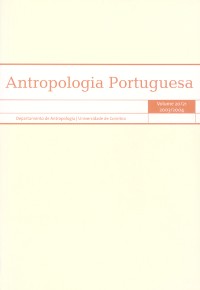Please use this identifier to cite or link to this item:
https://hdl.handle.net/10316.2/29378| Title: | Population genetics of 5 STR loci (CD4, TPO, VWA, F13A1 and MBPB) in S. Miguel Island (Azores, Portugal) | Authors: | Silva, Catarina Castro-Oliveira, Paulo Montiel, Rafael Lima, Manuela |
Keywords: | S. Miguel (Azores);population genetics;STRs;PCR;population differentiation;S. Miguel (Açores);genética populacional;STRs;PCR;diferenciação populacional | Issue Date: | 2004 | Publisher: | CIAS - Centro de Investigação em Antropologia e Saúde | Abstract: | A study of five Short Tandem Repeat (STR) loci was undertaken using
samples of unrelated individuals with Azorean ancestry, born in the island of S.
Miguel. Markers were analysed by PCR, followed by PAGE (CD4, TPO and
VWA) or using a Genetic Analyser (F13A1 and MBPB). The results obtained
revealed that two of the markers studied (VWA and MBPB) were not in agreement
with the Hardy-Weinberg expectations. Population differentiation tests demonstrated
a higher number of significant differences observed between S. Miguel
and samples from the North and South of Portugal than between S. Miguel and
Centre Portugal. The Neighbour-Joining tree showed a clear separation between
sub-Saharan populations and all the other populations. Further analyses suggest
genetic affinities between S. Miguel and one of the North African samples. These
results are in agreement with mtDNA data as well as with historical reports in
which the contribution of Moorish slaves to the founding population of S. Miguel
is frequently evoked. Um estudo sistematizado de cinco loci do tipo Short Tandem Repeat (STR) foi desenvolvido, usando amostras de indivíduos não-aparentados com ascendência açoriana, naturais da ilha de S. Miguel. Os marcadores genéticos foram amplificados por PCR e analisados em PAGE (CD4, TPO e VWA) ou recorrendo a um Genetic Analyser (F13A1 e MBPB). Os resultados obtidos revelaram que dois dos marcadores estudados (VWA e MBPB) não se encontravam de acordo com o formalismo de Hardy-Weinberg. Testes de diferenciação populacional demonstraram um maior número de diferenças significativas entre S. Miguel e o Norte e Sul de Portugal do que entre S. Miguel e o Centro de Portugal. A árvore genética, construída pelo método de Neighbour-Joining, evidencia uma separação clara entre as populações sub-sarianas e as restantes populações. Outras análises efectuadas sugerem uma afinidade genética entre S. Miguel e uma das populações do Norte de África. Estes resultados vão ao encontro quer dos dados obtidos para o mtDNA quer aos relatos históricos nos quais a contribuição de escravos mouriscos para a população fundadora de S. Miguel é frequentemente evocada. |
URI: | https://hdl.handle.net/10316.2/29378 | ISSN: | 2182-7982 | Rights: | open access |
| Appears in Collections: | Antropologia Portuguesa |
Files in This Item:
| File | Description | Size | Format | |
|---|---|---|---|---|
| ap20-21_artigo14.pdf | 814.58 kB | Adobe PDF |  |
Items in DSpace are protected by copyright, with all rights reserved, unless otherwise indicated.
